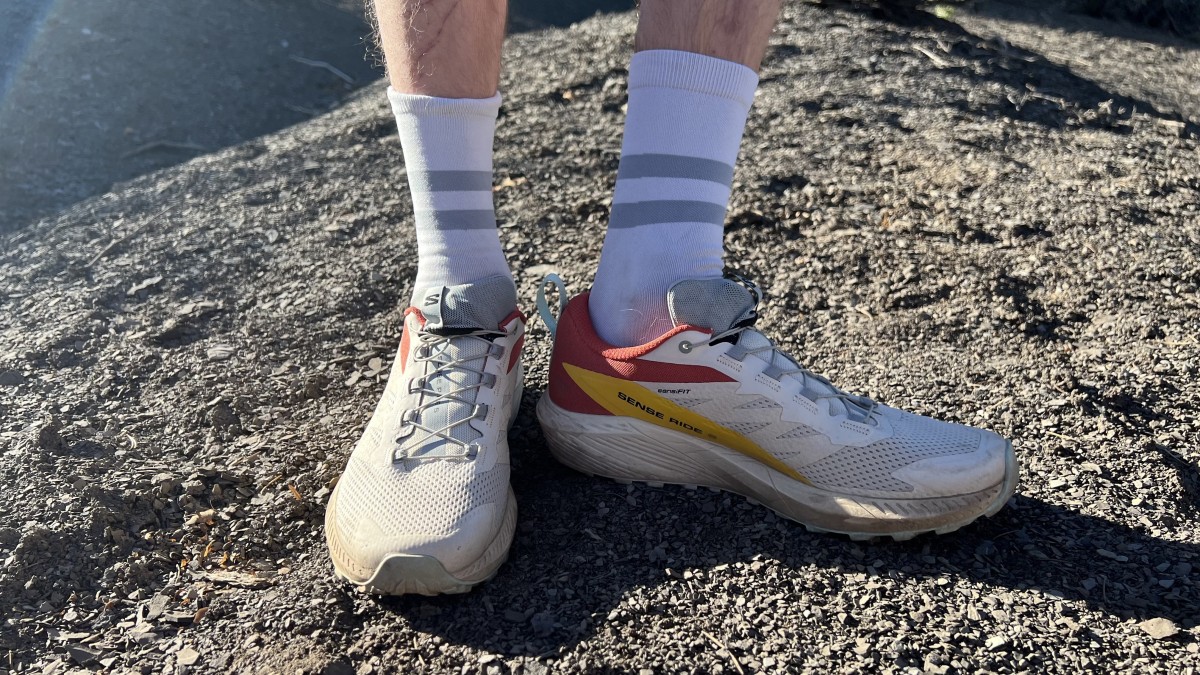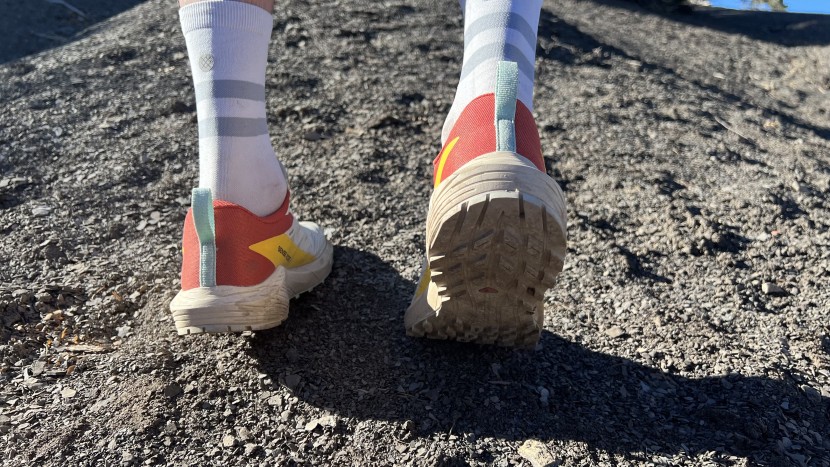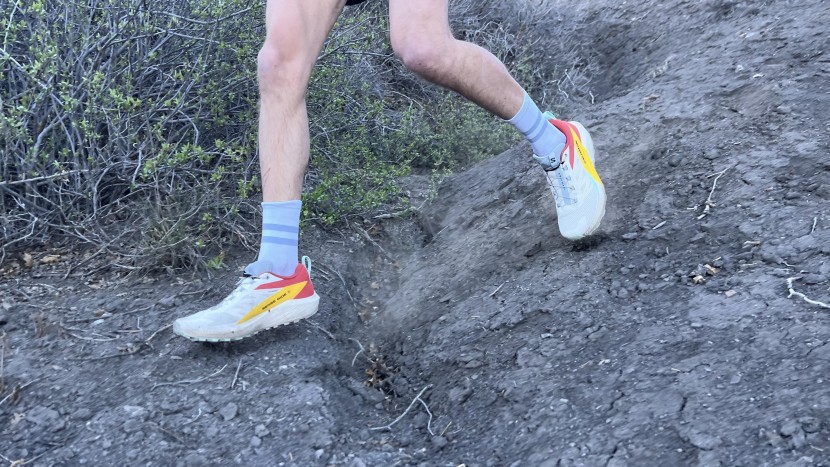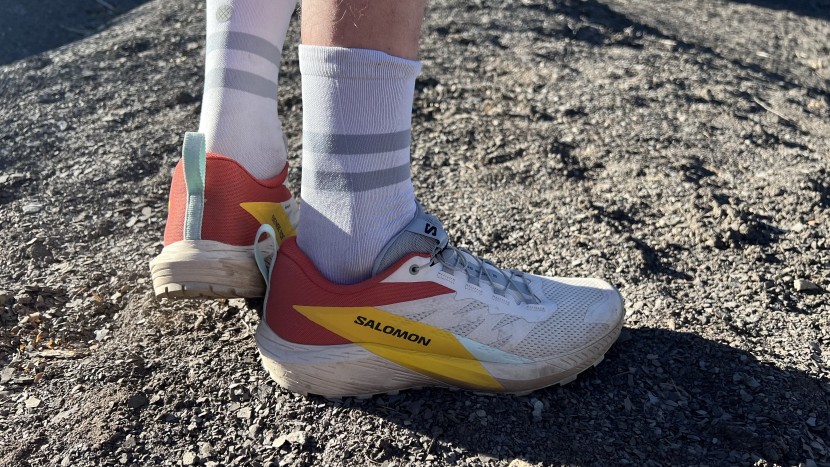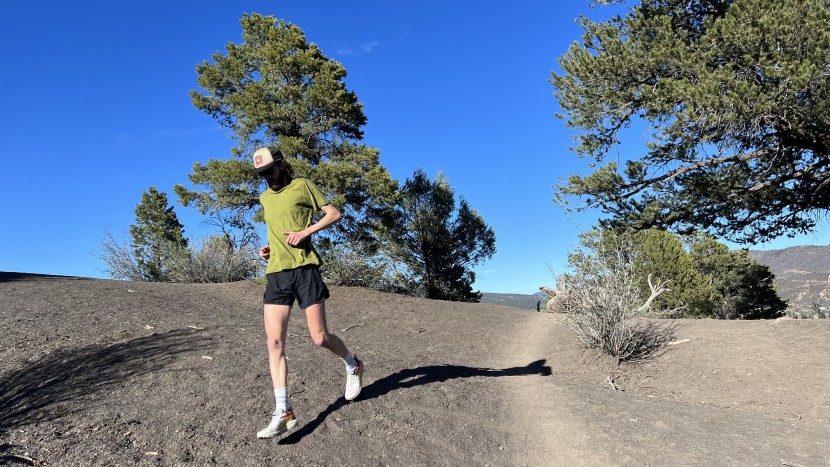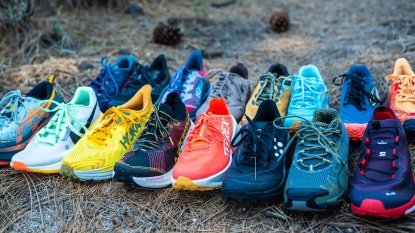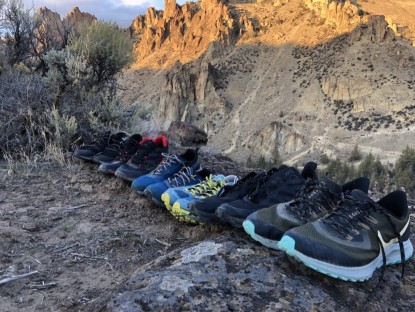
Our Verdict
Our Analysis and Test Results
If you are in the market for a trail-inspired shoe that's more suited for gravel paths and around town, this could be the model you've been searching for. Salomon continues the Sense Ride series, offering updates to the outsole and upper. Unfortunately, this iteration lacks versatility, so for users that want an all-around option, we'd look elsewhere. The shoe's overall design is stiff, leading towards great energy transfer, but we think most users will find it too one-dimensional.
Comfort and Fit
The upper fits well in the forefoot, but we found the sides initially quite stiff. Once they broke in, they were more comfortable due to their increased flexibility. The cinch laces are great, but stowing them is more difficult since there are more laces covering the storage pocket. The ground feel and impact of the Sense Ride decrease the comfort score substantially, and we could never get psyched to run in this shoe. Expect this model to take some time to break in before it comes alive.
Traction
The Sense Ride has a slightly higher stack and less sensitivity, so it's not as confidence-inspiring in steep or loose terrain. However, using this shoe as intended, the traction is more than adequate. Buffed trails and gravel roads are where this traction design is at home when combined with the foam style. More consistent ground contact on these surfaces reduces the need for lugs and extensive outsoles. This stiff design produces more surface area contact on these surfaces, making this one of the best shoes in our lineup for fast running on non-technical surfaces.
Stability
The dense foam gives the Sense Ride 5 a stable platform even with the higher stack height. We found this shoe amply supportive on easy to moderate trails, but on technical terrain, there was almost too much stability — we often felt locked into certain foot positions. This shoe prefers consistency, and the stability confirms that. If you have pronation problems, consider checking out this model since there is a lot of rigidity through the heel, which translates up the knees and hips. Users with a more neutral form should find this model equally as supportive.
Foot Protection
This shoe is stiff, and that stiffness allows for minimal ground feel but a whole lot of protection. Most of this protection comes from the natural rigidity of the shoe since there is no carbon plate. Thick, dense foam offers maximum ground protection, with the upper being surprisingly minimal. This is another reminder to us that the Sense Ride 5 excels with energy transfer on more moderate terrain like gravel roads and green trails. While it scores high in this category, we think it almost does a disservice, feeling overly restrictive and non-compliant. We normally train on mountain trails, so you may have to look past our judgment if you are located and train on less technical terrain.
Weight
The Sense Ride 5 sits in the middle ground of our lineup, weighing 10.87 ounces per shoe (size 10.5 US). The shoe never really felt heavy or light and offers a fairly muted experience unless you are really digging into the trail looking for maximum energy return. Over time, it becomes more lively, but the extensive break-in time wasn't worth it to us when other shoes feel great out of the box and still last just as long. Luckily, the durable outsole rubber is firm and should last for hundreds of miles. The upper is well-made, and we experienced no noticeable issues during our testing.
Sensitivity
It's no surprise that sensitivity is largely non-existent. Thick, dense foam and a rigid, dense outsole offer a vague feeling on technical terrain. While this isn't a deal breaker for fast running, it feels harsh and overbuilt when at a more relaxed pace. On technical terrain, there is less feedback for foot placement, leading to potential missteps and tweaks. On our ridgeline running test, we found this shoe to require slow placement, and it was less intrinsic than other models in our lineup. While we test all of the shoes the same, this was not our favorite when it came to tackling technical miles.
Should You Buy the Salomon Sense Ride 5?
If you are looking to run on gravel and mixed surfaces and prefer a bit more traction over a road shoe, we'd recommend this model. You may prefer something else if you will be focusing on more technical terrain. While this shoe isn't our favorite, we think there is a use case where it could work for you. We hope we've made your decision easier!
What Other Trail Running Shoes Should You Consider?
For a shoe that is great on roads, gravel, and moderate trail, we'd recommend the HOKA Torrent 4. Unless you are accustomed to the slimmer Salomon fit, it will likely perform better for all users. The Sense Ride 5 is a more snug-fitting model, with the Torrent 3 being more relaxed in the upper. The Torrent also has a slightly larger platform underneath the foot, leading to a more neutral feeling.


